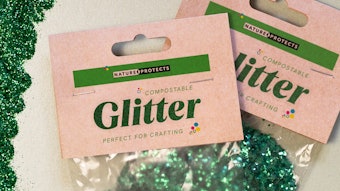The beauty industry is increasingly turning to the sea and oceans in the search for new ingredients. Although many novel raw materials are emerging, the development is raising many questions about sustainability. Can the beauty industry learn from the food industry and prevent damage to marine eco-systems when sourcing?
Beauty and cosmetic ingredient firms are developing new materials from coastal plants, seaweeds, algae and sea minerals. These materials are especially favored by natural cosmetic companies seeking new sources of innovation. The Greek company Apivita is using sea fennel in sun care products, while Italy-based Lacote has a comprehensive range of anti-cellulite skin care products formulated using Guam seaweed. Sea algae, rich in vitamins and minerals, are becoming a common source of anti-aging actives, and other brands are using sea minerals in their formulations, looking to emulate the success of Dead Sea mineral-based products.
High demand for marine ingredients is increasing the number of raw material suppliers specializing in such products. The Norwegian firm Aqua Bio Technology has developed a novel range of ingredients derived from salmon hatcheries, while U.S.-based Heliae is using new strains of algae for beauty applications. Other companies like Lipotec and BiotechMarine also are using biotechnology to harvest actives from marine sources.
However, the popularity of marine ingredients is leading to concerns that large-scale sourcing, or non-sustainable production methods, could disrupt marine eco-systems already under strain.
Non-sustainable sourcing of seafood has led to an estimated loss of 90% of predatory fish from the world’s oceans. Apart from taking certain species to near extinction, overfishing has disrupted many ecosystems. Climate change has led to the acidification of oceans and sea levels and temperatures have risen, while the number of invasive species is growing because of human activity and environmental pollution.
Apart from taking its raw materials, the beauty industry also is impacting marine ecosystems by waste. The dumping of cosmetic packaging as waste into the sea has adversely affected fish, mammals and birds, as well as plant species. A recent study by Wageningen University showed such packaging was linked to marine life damage in the North Sea.
With the beauty industry having an insatiable appetite for novel ingredients, Organic Monitor expects marine sourcing to increase in the coming years. The challenge is to combine innovation with sustainability. In this respect, natural beauty firms could lead the way because many have sustainable sourcing embedded in their corporate DNA.
As will be shown at the European edition of the Sustainable Cosmetics Summit, there are signs this development is already occurring. The German company OceanBasis has set up a sustainable aquaculture farm in the Baltic Sea to produce algae for its natural cosmetics. The certified farm is providing a sustainable source of active ingredients for its Oceanwell range. OceanBasis has shown how natural beauty companies can embrace innovation while turning a darker shade of green.
Sustainable sourcing of marine ingredients will be featured in the European edition of the Sustainable Cosmetics Summit. Taking place in Paris on November 21–23, the summit will highlight the sustainability implications of marine sourcing and highlight best-practices. OceanBasis, Apivita, Heliae and Lipotec will be participating, as well as other organizations involved in the sourcing and use of marine ingredients.










